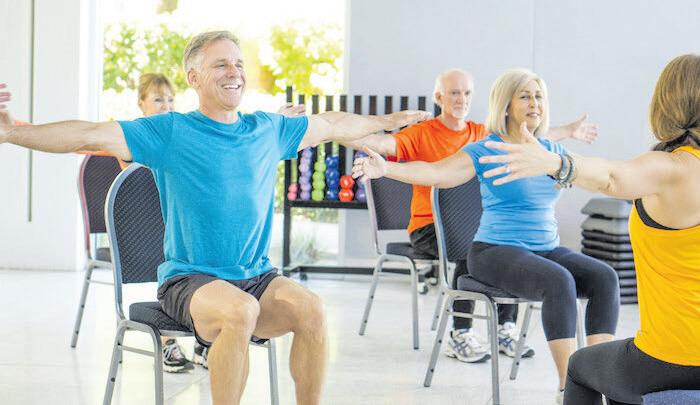
1 minute read
Why should seniors prioritize physical activity?
By Jeff Gibbs
Regardless of age, embracing physical activity offers a myriad of health benefts that signifcantly enhance overall well-being.
Contrary to popular belief, staying active doesn’t have to feel like a chore; in fact, it can be an enjoyable and sociable experience.
Engaging in regular exercise not only promotes physical health but also stimulates mental acuity, ultimately elevating one’s quality of life.
Even small increments of daily physical activity yield profound advantages, reducing the risk of various health conditions including high blood pressure, high cholesterol, type 2 diabetes, heart disease, osteoporosis, obesity, and certain cancers.
Moreover, staying active fosters better sleep, uplifts mood, boosts energy levels, mitigates stress, anxiety, and even diminishes pain associated with conditions like arthritis.
Conversely, prolonged periods of sedentary behaviour pose signifcant health risks, underscoring the importance of interspersing sitting with physical activity. Incorporating even brief bouts of walking or stretching throughout the day can mitigate adverse health outcomes.

Furthermore, physical activity has been demonstrated to decelerate the aging process, particularly when it includes resistance training and fexibility exercises. With advancing age, individuals typically experience declines in muscle mass, bone density, and fexibility, compounded by chronic health issues. However, regular exercise has been shown to enhance overall health, stave off chronic conditions, and alleviate frailty, thereby promoting longevity and an improved quality of life.
To reap these benefts, seniors should aim for approximately 30 minutes of moderateintensity physical activity daily. This can encompass various activities tailored to individual preferences, including cardiovascular exercises like brisk walking, cycling, or swimming, as well as strength-building activities like weight training or gardening. Flexibility exercises such as yoga or Tai Chi, along with balancing activities like side leg raises or heel raises, also contribute to overall health and well-being. Incorporating physical activity into daily routines can be gradual, allowing the body time to adapt. It’s essential to wear comfortable attire, stay hydrated, and consult with a healthcare professional before commencing any new exercise regimen, particularly for those with pre-existing health conditions.
Dispelling common myths about physical activity among seniors is crucial for fostering a culture of inclusivity and empowerment. Contrary to misconceptions, gyms cater to individuals of all ages, and frailty shouldn’t deter anyone from engaging in suitable activities. It’s never too late to embark on a journey towards better health and vitality, as physical activity can be tailored to accommodate diverse abilities and preferences.
Ultimately, prioritizing physical activity empowers seniors to embrace an active lifestyle, enhancing their physical health, mental well-being, and overall quality of life well into their golden years.










